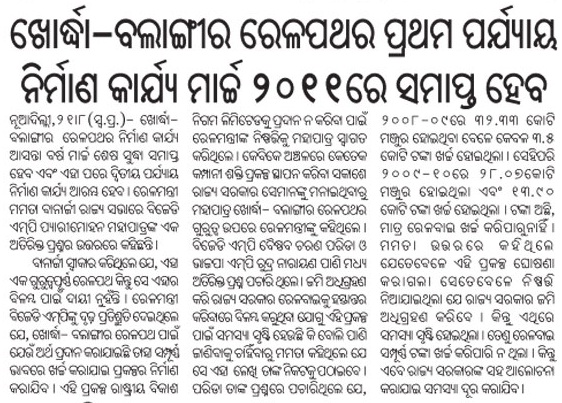Following is an email that I and many other are sending to the PM, the Minister of Civil Aviation, the chief minister and other officials. Please consider sending similar emails to them. Feel free to add additional requests (such as air services to Rourkela airport, etc.) that may seem logical to you. The email addresses to send are: "Dr. Manmohan Singh" <pmosb@pmo.nic.in>, praful@sansad.nic.in, Chief Minister <cmo@ori.nic.in>, ps.moca@nic.in, secy.moca@nic.in, ctsec@ori.nic.in, "Sonia Gandhi" <soniagandhi@sansad.nic.in>, ortour@orissatourism.gov.in
To: Dr. Manmohan Singh, Prime Minister, Government of India
Mr. Praful Patel, Minister of Civil Aviation, Government of India
CC: Mr. Naveen Patnaik, Chief Minister, Government of Orissa
Dear Dr. Singh and Mr. Patel:
Yet again Orissa is being neglected with respect to infrastructure development. While there are news reports [3] that Visakhapatnam airport will soon become an international airport, your government is neglecting the just demands of making Bhubaneswar an international airport even though the later would serve a much bigger population, will be the only international airport in the state, and as per your own data currently has 50% more daily flights than Visakhapatnam.
Is this because Congress rules in Andhra Pradesh and is in the opposition in Orissa?
Sir: We would like you to think about even development across India and not just about states ruled by the Congress party. It is your prerogative to establish as many international airports in Andhra Pradesh or any other state of your choice, and we are happy for them, but please do not neglect Orissa in the process.
We would like to request you to designate the Bhubaneswar airport as an international airport and have Air India (Express) flights directly connecting Bhubaneswar to international destinations, starting with one or more south East Asian destinations such as Bangkok and Singapore. We would also like you to expedite the establishment and operationalization of a commercial airport in Jharsuguda which will cater to the industrial belt of Sambalpur-Jharsuguda-Sundergarh-Rourkela of Orissa and the Ib valley that encompasses Chhatisgarh and Orissa.
The Bhubaneswar airport caters to the capital area of Orissa and its nearby areas. While the larger metropolitan area of Bhubaneswar [Map1] has a population of 19 lakhs [1], a 200kms radius of around Bhubaneswar consists of 14 of the 21 parliamentary constituencies of Orissa (Berhampur, Aska, Puri, Bhubaneswar, Cuttack, Dhenkanal, Jajpur, Balasore, Bhadrak, Kendrapada, Jagatsignhpur, Mayurbhanj, Keonjhar, Phulbani) with a population of about 3 crores.
This area includes several large population centers [Map2] as well as existing and emerging industrial hubs. These centers and hubs are Berhampur to the south, Puri and Paradeep to the east, Angul-Talcher to the west, Kalinganagar, Dhamara and Balasore to the North. The area also includes top tourist destinations such as Puri, Bhubaneswar, Chilika, as well as the Buddhist monuments of Orissa which are of special interest to East Asia. As you may know Buddhism spread to East Asia and beyond when Emperor Ashoka became Dharmshoka on the bank of the Daya river on the outskirts of Bhubaneswar.
The area is also ripe for a logistic corridor with existing excellent Rail, Road, and Ports connectivity and with a national waterway under works. Thus an international airport would also make it a multi-modal logistic hub.
The Bhubaneswar airport has a runway of 9000 feet and it is being extended to 10,500 feet.
Currently, four airlines have regular flights linking Bhubaneswar, three of which have international operations. They are Kingfisher, Jetlite (of Jet) and Air India. The 4th airline connecting Bhubaneswar is Indigo which commenced operations in India on 4th August 2006 and would be eligible for international flights in 2011.
The average number of flights operating from Bhubaneswar [2] is 50, which is more than with respect to airports in Calicut – 50, Nagpur – 48, Coimbatore – 42, Mangalore – 30, Patna – 27, Srinagar – 27, Amritsar – 27, Trichy – 21, Varanasi – 16, Port Blair – 15, Tirupati – 9, Gaya – 1 all of which have been designated as international or customs airports. In addition, there have been recent reports [3] that Visakhapatnam with an average of 33 flights will soon be an international airport.
In [Map3] we map the international and custom airports of India and as anyone would notice there is a big gap around Bhubaneswar.
With Bhubaneswar emerging as an IT, Knowledge/Education and Tourism hub, and Odisha among the leaders in terms of incoming investments it is imperative that the Bhubaneswar airport be made to an international airport urgently.
We sincerely request you to shed your partisan attitude of neglecting the non-Congress ruled state of Orissa (in favor of Congress ruled states like Andhra Pradesh) and take immediate action on that front and declare Bhubaneswar as an international airport and commence international flights to/from Bhubaneswar.
[1] http://www.orissalinks.com/orissagrowth/archives/1846
[2] http://pib.nic.in/release/release.asp?relid=55629
[3] http://www.thehindu.com/news/cities/Visakhapatnam/article478992.ece
[4] http://pib.nic.in/release/release.asp?relid=55628
Sincerely,
APPENDIX 1
From http://pib.nic.in/release/release.asp?relid=55628
The average number of flights operated in a day from each of the International Airports in the country is as under: Mumbai(MIAL) – 654, Delhi (DIAL) – 666, Chennai – 306, Banglore (BIAL) – 280, Kolkata – 231, Hyderabad (GHIAL) – 219, Cochin – 112, Ahmedabad- 107, Guwahati – 90, Trivandrum – 71, Goa – 64, Calicut – 50, Jaipur – 66, Nagpur – 48, Port Blair – 15, Srinagar – 27, Amritsar – 27, Pune – 66, Indore – 61, Juhu – 60, Bhopal – 59, Lucknow – 56, Vadodra – 54, Bhubaneswar – 50, Coimbatore – 42, Visakhapatnam – 33, Ranchi – 32, Raipur – 31, Mangalore – 30, Patna – 27, Jammu- 23, Agartala – 23, Trichy – 21, Chandigarh – 21, Udaipur -21, Imphal – 19, Madurai – 20, Bagdogra – 19, Varanasi – 16,Aurangabad – 14, Silchar – 11, Tirupati – 9, Jodhpur – 7, Leh – 6, Rajkot – 6, Gaya – 1.
APPENDIX 2
FROM http://pib.nic.in/release/release.asp?relid=55628
So far, seventeen airports in the country have been accorded “International Status”. These airports are Ahmedabad, Amritsar, Calicut, Chennai, Guwahati, Jaipur, Kolkata, Thiruvananthapuram, Bengaluru, Hyderabad, Kochi, Delhi, Mumbai, Nagpur, Goa, Port Blair and Srinagar. Of these, eight airports, namely, Ahmedabad, Amritsar, Calicut, Chennai, Guwahati, Jaipur, Kolkata and Thiruvananthapuram belong to Airports Authority of India (AAI) and three Civil Enclaves, namely, Goa, Port Blair and Srinagar are maintained by AAI. AAI provides CNS / ATM services for five airports managed by Joint Venture Companies at Bengaluru, Hyderabad, Delhi, Mumbai and Nagpur and for one private airport at Kochi. At Goa, Port Blair and Srinagar, which belong to Defence, AAI only maintains Civil Enclaves and CNS/ATM services are provided by Defence. In addition, Tirupathi airport has been declared as an international airport subject to the condition that the international airport may be made operational only after requisite facilities have been put in place.
Some airports are notified as Customs airports which can also cater to international flights. The customs airports are Varanasai, Tiruchirapalli (Trichy), Patna, Mangalore, Lucknow, Gaya, Coimbatore and Pune (civil enclave).
APPENDIX 3
From http://www.thehindu.com/news/cities/Visakhapatnam/article478992.ece
Favourable reply to Rosaiah’s letter to Union Ministry likely next month
International flights may very soon begin to land at the Visakhapatnam airport with the State Government taking firm initiative to get permission from the Union Government to formally declare it an International Airport.
The Department of Investment and Infrastructure now with Chief Minister Konijeti Roshaiah has written to Ministry of Civil Aviation to accord the requisite permission for the airport and a favourable reply was likely in July.
MAPS:
MAP 1: Greater Bhubaneswar area as per the CDP made by IIT Kharagpur
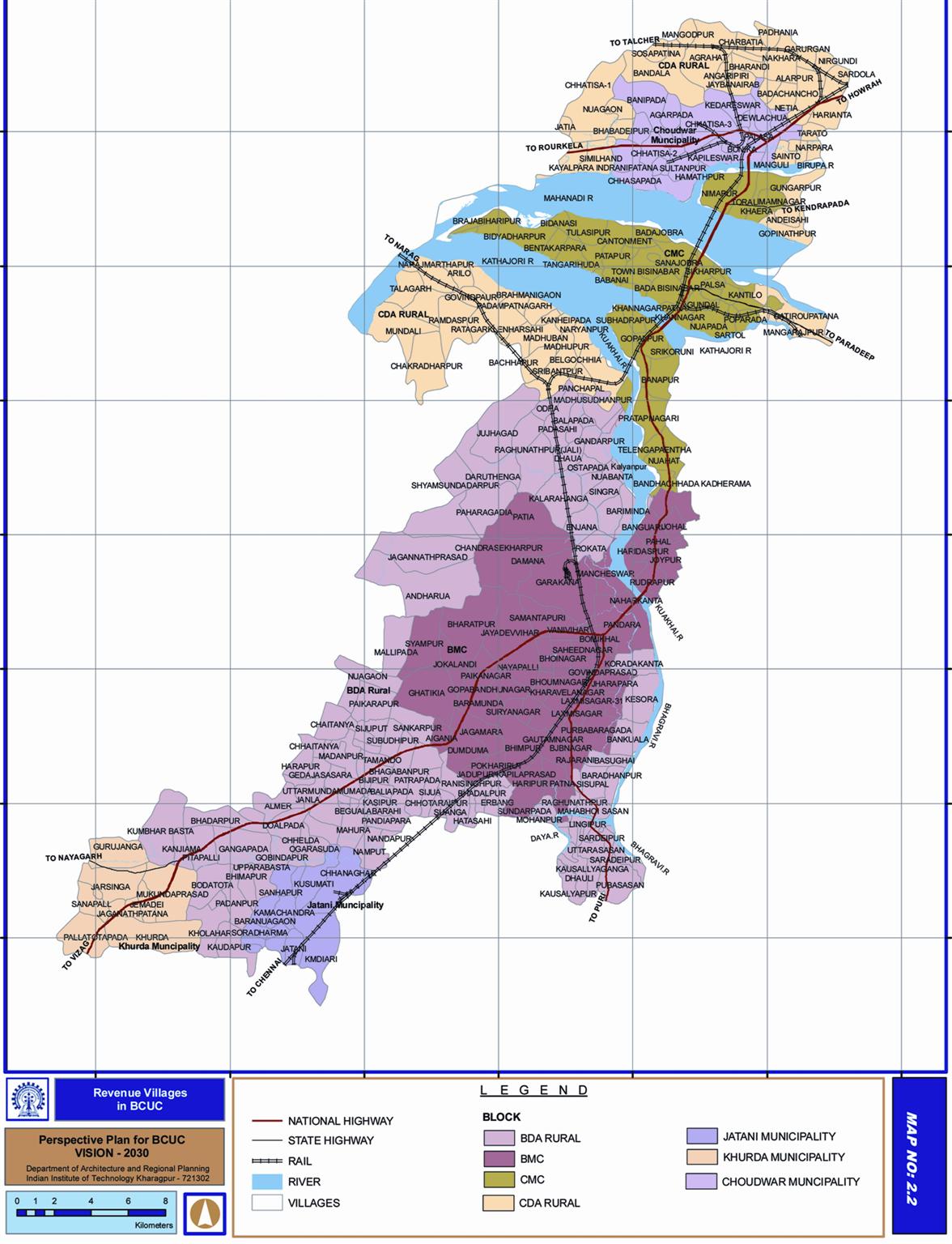
MAP 2: Population centers and industry hubs around the Bhubaneswar area (within about 200kms)
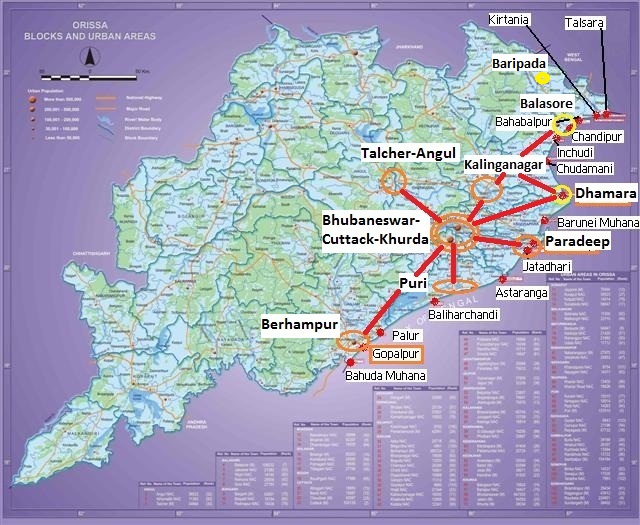
MAP 3: International and Custom Airports of India (showing the big gap around Bhubaneswar)
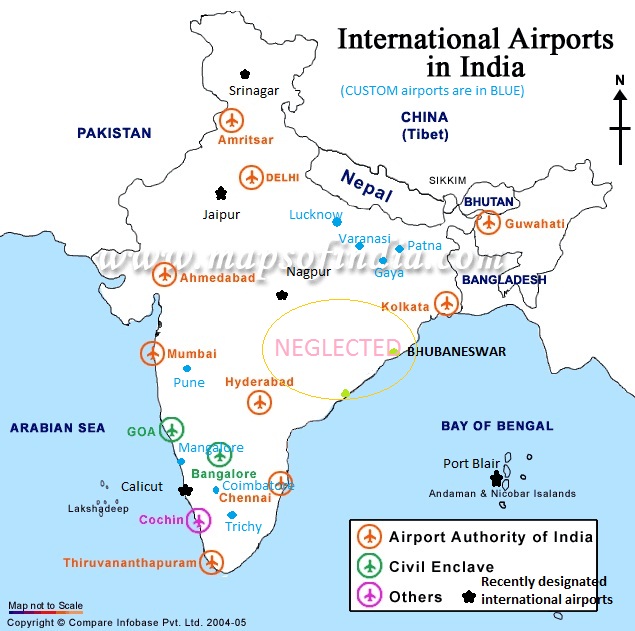
Postscript: Again, if you would like to campaign for whatever else, Do it. No one is stopping you. But don’t act like the proverbial crabs and thwart efforts that are going on. Unfortunately, as evident from some of the responses (see for example the comments at tathya.in) , some people are not even reading the content carefully (otherwise they would notice the mention of Jharsuguda) and instead of doing something positive, they have a knee-jerk negative reaction.
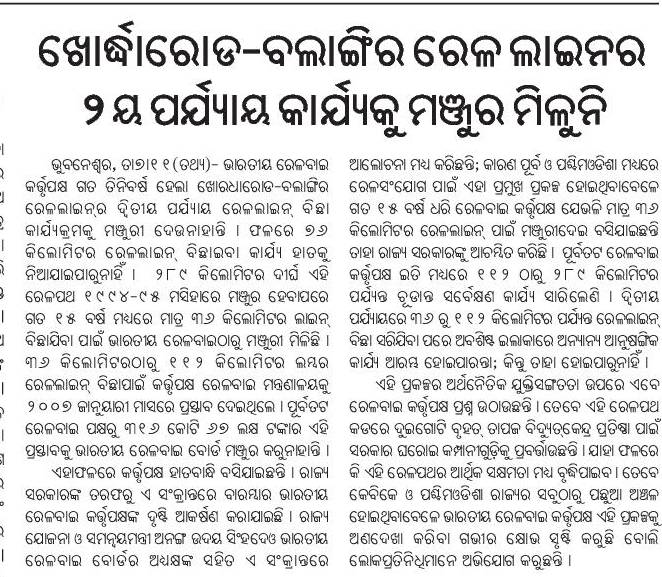
.png)
